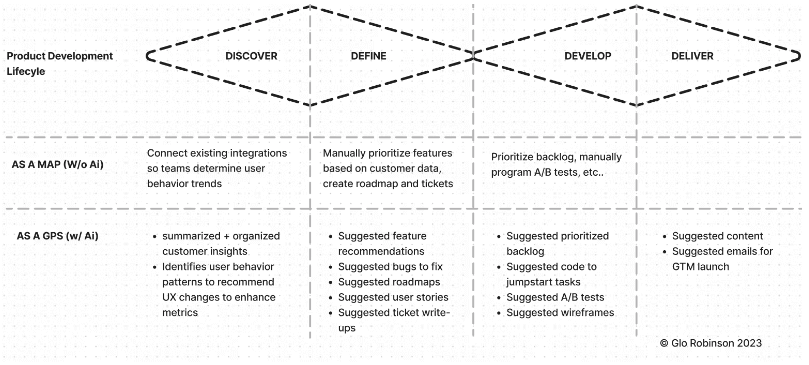Introduction to time to value and time to market in product management
In the fast-paced world of product management, two concepts often guide the strategies of development teams: Time to market (TTM) and time to value (TTV). Time to market refers to the duration it takes to develop a product and launch it into the market. This metric is crucial for gaining competitive advantage, especially in industries where being first can dictate market leadership. However, it primarily focuses on the speed of delivery rather than the impact of the product.
On the other hand, time to value emphasizes the speed at which a product delivers value to its users after it has been released. For customer-facing products, this could mean how quickly a product starts generating revenue, known as "time to money." For internal products, it may relate to how soon a tool improves operational efficiencies or employee productivity.
For example, a CRM system implemented for internal use that reduces time spent on data entry and increases time for customer interaction delivers value by improving efficiency. Externally, a new banking app that reduces the time taken for loan approvals directly impacts customer satisfaction and potentially increases revenue through faster service delivery.
Why time to value is more important than time to market
Time to market (TTM) emphasizes speed in launching a product, but it doesn't inherently consider whether the product meets user needs effectively or drives any meaningful outcome upon release. While Time to market can be critical in industries with fast-moving technological advancements or in scenarios where first-mover advantage dictates success, it has its drawbacks. Primarily, a rapid launch can lead to overlooked flaws, underdeveloped features, or misalignment with customer expectations, which can harm the brand's reputation and user satisfaction.
Time to value (TTV), on the other hand, focuses on the actual benefits a product delivers to users after it reaches the market. This metric is crucial because it directly correlates to customer satisfaction, retention, and the economic health of the product. In today's competitive landscape, consumers have high expectations and many alternatives; if a product does not quickly demonstrate value, users are likely to abandon it for a competing one that does.
Additionally, products designed with time to value in mind encourage continuous feedback and adaptation, ensuring the product evolves based on actual user needs and behaviors rather than assumptions. This focus on real outcomes fosters deeper customer loyalty and engagement, as customers see the product improve in ways that directly benefit them.
Shortening time to value through product discovery
Product discovery is a fundamental process in shortening time to value. This phase involves identifying, understanding, and validating the customer’s problems before any solution is defined or developed. By investing time in discovery, teams can focus their efforts on high-value activities that are more likely to meet the real and current needs of their users, thereby enhancing the potential for the product's success upon launch.
The key activities during product discovery include:
- Customer interviews and observation: Direct interaction with potential users helps to gather insights about their needs, behaviors, and pain points. This qualitative data is crucial for defining problems accurately.
- Prototyping and feasibility tests: Early and rapid prototyping allows teams to explore potential solutions and receive feedback quickly. This iterative process helps refine the product features according to what works best for the user.
- Validation through MVPs (Minimum Viable Products): Launching a product with just enough features to satisfy early customers and provide feedback for future product development cycles helps in understanding the value proposition more deeply.
- Data-driven iterations: Using data collected from initial users of the MVP to make informed decisions about which aspects of the product to enhance, change, or remove can significantly increase the speed at which the final product delivers value.
By prioritizing time to value through focused product discovery, companies not only enhance the relevance and appeal of their products but also align their development cycles with strategic business outcomes, ensuring a better return on investment and stronger market presence.
Case study: Development of a robo advisor app
FinGuide (name changed due to confidentiality), a fintech startup, initially aimed for a quick time to market (TTM) with their robo advisor app, hoping to gain a first-mover advantage. However, this approach led to several issues, including overlooked user needs, technical flaws, and low user engagement. Recognizing these pitfalls, FinGuide made a strategic shift to prioritize time to value (TTV) instead. This transition meant focusing on delivering immediate and tangible benefits to users rather than just being the first to market. They began by conducting extensive customer interviews to understand user needs, developing and refining prototypes through rapid feedback cycles, and launching a Minimum Viable Product (MVP) to gather valuable user data.
The shift from time to market to time to value had profound implications for FinGuide. By prioritizing features that delivered immediate value—such as personalized financial advice and real-time portfolio management—they significantly increased user satisfaction and retention rates. This customer-centric approach differentiated FinGuide in a crowded market, driving positive word-of-mouth referrals and sustainable growth. Focusing on time to value ensured that the app not only met user expectations but also continuously evolved based on user feedback, leading to a more engaged and loyal customer base and ultimately enhancing the company’s market position and revenue stream.
Outlook
Looking forward, the focus on time to value will likely increase as markets become more saturated and competitive. Organizations that master the art of delivering value quickly are not only more efficient but also better positioned to adapt to changing market conditions and customer needs.
The shift from time to market to time to value represents a deeper change in how products are built and delivered. It encourages a culture of validation, learning, and adaptation, which is essential in today's dynamic market environments. By focusing on value delivery, companies can foster stronger, longer-lasting relationships with their customers, ultimately driving sustained growth and success.








Comments
Join the community
Sign up for free to share your thoughts